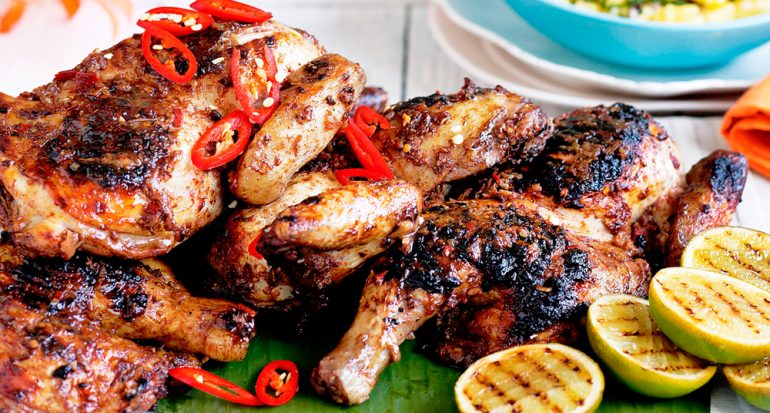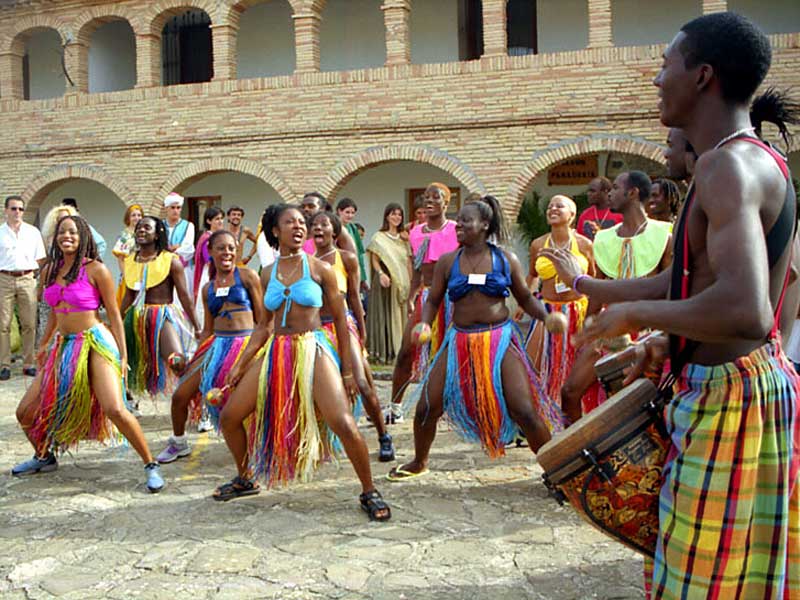INTRODUCTION
Culture is part of the language of the human being and this is acquired through the environment as it grows or participates within a social circle, this is how culture can transform the identity of people (language, customs, creeds, among others) acquired previously Brown (1994: 182). In a globalized world like the one in which we find ourselves, the human being is susceptible to adopt customs different from those acquired in his childhood, this exchange of cultures, in many occasions causes conflicts and misunderstandings, to understand a little and to deepen in the subject it is important to take into account the concepts that frame these phenomena. We see then that culture and contact with other cultures put the individual in an intercultural role where empathy and flexibility are very important in order to understand and integrate one's own with the foreign and at the same time challenge one's own culture. Further on we find examples of the culture of some countries that has been built by the influence of others and is still evolving (language, folklore, habits among others).
The Republic of Uguanda
Is located in East Africa, its culture is made up of contributions from a wide range of ethnic groups. Languages Uganda is ethnologically diverse, with at least forty languages in use. Luganda is the most common language. English is the official language of Uganda, despite the fact that only a relatively small proportionOf the population speak it
Access to political and economic power is almost impossible without mastering that language. The East African lingua franca, Swahili, is relatively widespread as a language of commerce and was made the official language of Uganda in September 2005 Luganda, a widespread language in central Uganda, has been the official vernacular language of education in Central Uganda for a long time
Dances
Ugandans are remarkably hospitable. As there is a variety of Ugandan traditions, each tribe has its own traditional dance; the Banyankole dance their Kitagururo dance; the Banyoro dance their Runyege; the Acholi dance the Bwora and the Otole. The Alur people of West Nile have the traditional Agwal dance, and the Bagisu have the Imbalu dance.
- Festivals and Dance
- Jazz and hip-hop are at their peak in Uganda and its festivals prove it.
- Nile Festival (December)
- Kampala City Festival (October)
- Amakula Kampala International Film Festival (September - end November)
- Bayimba International Festival of Music and Arts (August - November))
- Nile Jazz Safari (October
Clothing
Men in Uganda wear a kanzu which is a
white or cream-colored robe that reaches to
the floor. We refer to them as tunics.
Women wear a dress called gomesi with a
sash tied around the waist, they come from
the west they cover their waist with a long
cloth called suuka..
Southwestern women wear long, loose skirts
and ties to match their shoulders. They also
wear long, flowing, floor-length dresses,
called busuti, introduced by 19th century
Its cuisine is influenced by English, Arabic and Asianflavors. Most of its food is starch-based, with bean or meatsauces for flavor. The richest part of Uganda enjoys severalcourses. The starch is maize flour or matoke (boiled ormashed green plantains).In the north they use pearl millet. Ugali (maize flour) is mixedwith water for porridge for children's breakfast. Cassava,yam and African yam are also added to their diet. WealthierUgandans enjoy Irish rice and potatoes. Soya is also eatenhere, usually for breakfast and Chapati (which you may be familiar with as Asianflatbread).Typical dishes- Peanuts (groundnuts)- Sim-sim (sesame)- Matooke- Luwombo- Malewa- Kikomando
Gastronomy
- Its cuisine is influenced by English, Arabic and
- Asian flavors. Most of its food is starch-based,
- with bean or meat sauces for flavor. The
- richest part of Uganda enjoys several courses.
- The starch is maize flour or matoke (boiled or
- mashed green plantains).
- In the north they use pearl millet. Ugali (maize
- flour) is mixed with water for porridge for
- children's breakfast. Cassava, yam and
- African yam are also added to their diet.
- Wealthier Ugandans enjoy Irish rice and
- potatoes. Soya is also eaten here, usually for breakfast and Chapati (which you may be
- familiar with as Asian flatbread).
- Typical dishes
- Peanuts (groundnuts)
- Sim-sim (sesame)
- Matooke
- Luwombo
- Malewa
- Kikomando
Drinks
Tea (chai) and coffee (kawa)
Pombe and lubisi are generic words for locally fermented beer
BOLIVIA
Bolivia has a great diversity of expressions, as a result of the variety of geographic scenarios that its current territory comprises, as well as the ethnic diversity that characterizes it, there are 36 different nations or native indigenous peoples and peasants, recognized by the Political Constitution of the State.
There is a great wealth of traditions, costumes, dances and customs, which have been preserved since colonial times to the present day. The traditions of the peoples prior to the colony were mixed with those of the Spaniards in colonial times, achieving the mestization of clothing and traditions, which are still preserved by the population and revived in the folkloric festivities of the country.
Folklore
Bolivian folklore is characterized by its native instruments, such as the charango, the quena, the violin from Tarija, the erke, the pututu, the tamborcito, the zampoñas and the matraca, among others.
The dances are the result of the cultural syncretism of pre-Hispanic, indigenous, European and African traditions, customs and beliefs that occurred in the Bolivian territory. We find a good number of them.
- Beni Macheteros, Moperas, Dance of the Sun and the Moon, Chovena.
- Chuquisaca Pujllay, Cueca Chuquisaqueña, Bailecito, Huayño.
- Cochabamba Cueca, Caporales, El Salaque.
- La Paz Caporales, Kullawada, Llamerada, Cueca Paceña, Waka Waka, Saya, Incas, Waca Tocoris
Gastronomy
Bolivia's cuisine is as varied as its topography. And although there are traditional delicacies to be discovered in each locality, Bolivia's gastronomic offer evolves.
Salteñas The ubiquitous yellow empanada from La Paz leaves a delicious film on your fingers and a warm burn in your stomach. You can try them at Salteñas Especiales Marianita in Tupiza; they are to die for.
Tamales filled with charqui Corn flour dough stuffed with llama meat; sold at the Mercado de Ferias in Tupiza.
Cuñapé Bread rolls of yucca flour and cheese sold in Chiquitos, next to the border with Paraguay, where they are known as "chipá".
Sonso de yuca Puréed cassava with cheese; try it at the El Puente night market in
Tarija.
Api de maíz morado This hot drink of ground purple corn, cinnamon, sugar and cloves is popular in the altiplano; you'll find it in the markets of La Paz, Oruro, Potosí and Cochabamba.
Rice bread
Official languages
The official languages of the State are Spanish and all the languages of the native indigenous peasant nations and peoples, which are Aymara, Araona, Baure, Bésiro, Canichana, Cavineño, Cayubaba, Chácobo, Chimán, Ese Ejja, Guaraní, Guarasuawe, guarayu, itonama, leco, machajuyai-kallawaya, machineri, maropa, mojeño-trinitario, mojeño-ignaciano, moré, mosetén, movima, pacawara, puquina, quechua, sirionó, tacana, tapiete, toromona, uruchipaya, weenhayek, yaminawa, yuki, yuracaré and zamuco
The Jamaican culture is the product of a mixture of cultures that settled on the island of Jamaica. It was mainly formed by the Taino Indians, the Spanish colonizers, the English evangelists, the African population and finally the Hindu and Chinese communities
The gastronomy of Jamaica is very influenced by many cultures, since it has been a place of passage for the Africans, the British, the Indians, the Chinese..... However, the most common foods are cassava, corn, guava, fish (especially mackerel and cod) and grilled meat
FOLKLORE
Among the traditional dances we can find the mento, precursor of ska and reggae. It generally features acoustic instruments and the characteristic mbira, which is a large bass drum on which you can sit and play. Ska is also an important musical influence in the rest of the world.
Languages
Its official languages are English and Jamaican patois, Jamaica owes its language to the English colonies that took possession in 19 when it was invaded by English troops.
REFLECTION
Claire Kramsh says "culture is created and lived through dialogue between the teacher and the students and between them" (1993, 47) in this sense, it is necessary for teachers to take into account that the human being is not being unilinear, that is, the teaching and learning of a second language implies that the teacher recognizes that culture is a proper part of communicative competence.
So, teaching a second language consists of going beyond teaching grammatical structures, since it is necessary to take into account the important role that all cultural aspects play, which can become many, because when teaching within a cultural environment other than one's own, it is formed a new culture, giving a place to interculturality, a clear example of this we can see in the customs, language, religion, which are acquired thanks to the colonizations between countries.
Conclution
This activity made it possible to clarify the relationship between language and culture, to learn a new language, to learn a new language it is necessary to take into account a series of strategies that come from and adjust to the context.
Through the sketch of the mind map, some relevant concepts and competencies (interculturality, ectnocultural empathy, cognitive flexibility, intercultural understanding) were clarified that can become great tools when learning and teaching a second language.
REFERENCES
La cultura Boliviana https://www.lonelyplanet.es/america-del-sur/bolivia/cultura
Culture, tradictions of Jamaica https://www.studycountry.com/es/guia-paises/JM-culture.htm
ganda:SociedadCulturaWorldTradePress,2011.Ebscohost.The World Fact Book: El Estado del Mundo2014.AutoridaddeVidaSilvestredeUganda http://www.ugandawildlife.org
MAP MIND https://www.goconqr.com/en/mind_maps/28938982/edit#







Comentarios
Publicar un comentario